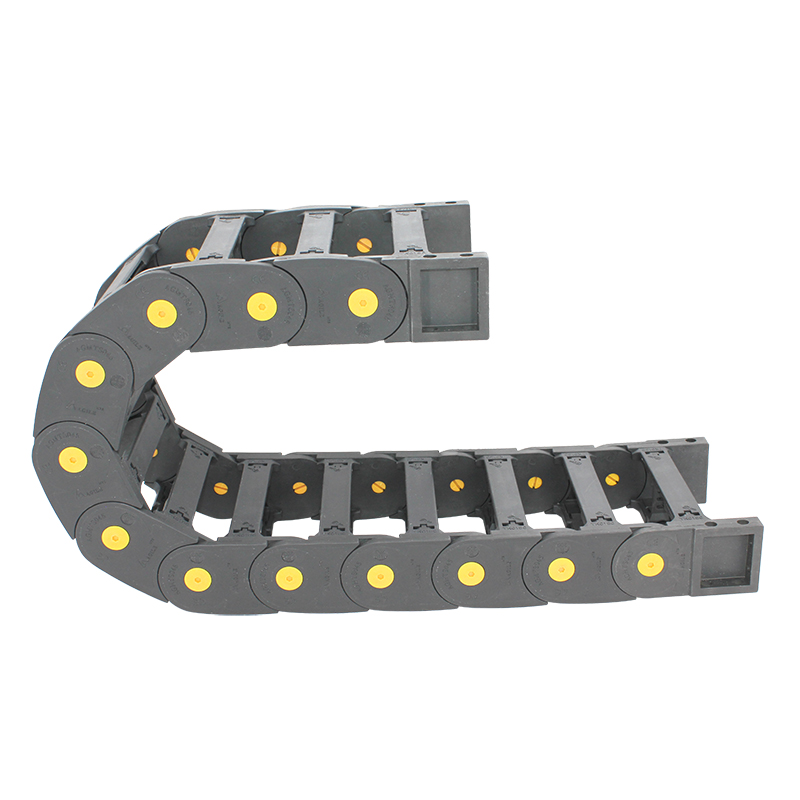cnc cable chain
Understanding CNC Cable Chains An Essential Component for Efficiency and Safety
CNC (Computer Numerical Control) machines have revolutionized the manufacturing industry, bringing unprecedented levels of precision and automation. Among the critical components that enhance the functionality of CNC systems are cable chains, also known as energy chains or drag chains. These specialized structures play a fundamental role in managing and protecting the various cables and hoses that power and control CNC machines.
What are CNC Cable Chains?
CNC cable chains are flexible, segmented structures that organize and contain electrical cables, pneumatic hoses, and hydraulic lines. These chains allow for smooth movement of cables during the machine's operation, preventing wear and tear caused by friction or bending. This is particularly important in CNC applications, where the movements can be swift and complex, thus requiring a reliable system to support the associated wiring and piping.
Benefits of Using Cable Chains in CNC Machines
1. Enhanced Protection One of the primary advantages of using cable chains is their ability to protect cables from mechanical damage, dirt, chemicals, and other environmental factors. Keeping cables organized and shielded prolongs their lifespan and minimizes the risk of equipment failure.
2. Improved Flexibility CNC machines often operate in multi-axis movements, which require cables to move freely without constraints. Cable chains are designed to accommodate these dynamic motions, ensuring that cables can extend and retract as needed without undue stress.
3. Space Efficiency The compact design of cable chains allows for effective use of space within CNC systems. They neatly bundle cables and hoses, reducing clutter and making maintenance easier.
4. Reduced Downtime By minimizing wear and preventing cable damage, CNC cable chains contribute to less frequent breakdowns and repair times. This reliability is essential in manufacturing environments where downtime can significantly impact productivity and profitability.
cnc cable chain

Types of Cable Chains
CNC cable chains come in various materials and configurations to suit different applications. Common materials include plastic, steel, and aluminum, each offering unique benefits in terms of weight, strength, and resistance to environmental factors. Flexible cable chains can also be customized in terms of size and design, ensuring that they fit specific machine requirements perfectly.
1. Plastic Cable Chains Lightweight and corrosion-resistant, plastic options are ideal for environments where weight reduction is crucial.
2. Metal Cable Chains For heavy-duty applications, metal chains provide enhanced durability and protection against abrasive environments.
3. Open and Closed Cable Chains Open chains allow for easy access and maintenance of cables, while closed chains provide superior protection from external hazards.
Installation and Maintenance
Proper installation of CNC cable chains is vital for their efficiency and longevity. It typically involves attaching the chains securely to the machine frame and ensuring that they are configured to allow adequate movement. Regular maintenance checks are also necessary to inspect for wear, ensure that the cables are organized and free from tangles, and replace any damaged sections of the chain promptly.
Conclusion
CNC cable chains are an indispensable component in maintaining the functionality and reliability of CNC machines. By protecting and managing electrical and hydraulic systems, they enhance the overall efficiency of CNC operations. Choosing the right type of cable chain, ensuring proper installation, and conducting regular maintenance can lead to substantial long-term benefits, from improved safety to increased production output. In a competitive manufacturing landscape, investing in quality cable chain solutions is not just beneficial; it’s essential for success.








